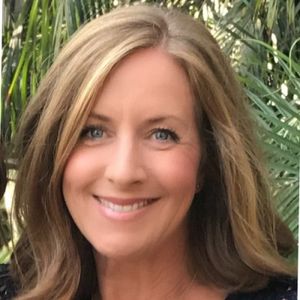Customer marketers, thanks for joining us as we talk about customer marketing all grown up. The inspiration for our topic came from working with customer advocate programs with highly integrated models. They are, in our view, the unicorns of customer advocacy.
We believe more companies can and should be as advanced and impactful, but there aren't a lot of role models. We see a lot of programs with a variety of the customer marketing bases covered, such as reference management, community advisory boards, and so on, but these functions often don't know what the others are up to.
It doesn't help that they may also reside in different departments. And too often the leaders of the departments don't give much thought to how their puzzle piece fits into the greater customer advocate puzzle. They're siloed, each limited in their respective potential. As you might guess, the silo effect only grows more prolific and gets more complicated in larger organizations.
The lack of integration can be unintentional (due to a lack of vision, perhaps) or intentional (the result of organizational territorialism). There's a thread that connects all these advocate activities, but it's essentially invisible when there are silos.
Meanwhile, unicorn programs are interconnected and coordinated. They operate as a system and their impact is exponential by comparison. There is no single correct way to organize a customer advocacy program, but there are common attributes among unicorn programs:
- Leadership internalizes the vision of an integrated model.
- Coordination is an operational imperative among the teams and departments that work with each other.
- Collaboration processes are established and followed.
- Enabling technologies are tightly integrated.
If the value of an integrated model is crystal clear to you, then your mission is to share this vision with your leadership. Fortunately, sharing compelling stories is in essence what we do in this field, right? So without further ado, here's a story you'll want to share.
Silos = advocacy fatigue
The advocacy program at Genesys has an interesting and enviable origin story. The program as it exists today is nothing like it was even three years ago.
In the before times, it was very siloed. We had reference fulfillment under sales, content creation under marketing, and various other stakeholders looking for references, case studies, and so on from our customers. As you can imagine, that created a lot of fatigue for the customer because they were being contacted by various stakeholders within Genesys for all kinds of asks. It also caused internal fatigue because sourcing customers and asking them questions takes time.
Global Customer Advocacy and Engagement
We knew we had a problem on our hands and we needed a more advocate-friendly way to approach our customers with requests, so we took people from sales enablement, customer marketing, and content marketing and pulled together a team called Global Customer Advocacy and Engagement.
We chose the name of our team very strategically because not only do we want our advocates advocating on behalf of our company, but we also want them engaged. We don't just want to be asking from them; we want to be offering something that's of value to them.
This team is now the one customer touchpoint, so they don’t have requests coming at them from all directions anymore. They're only getting asks from us, which allows us to build very deep relationships with our customers – that's paid off in spades for our advocacy program.
Let's get into a quick overview of how the program is organized and staffed today. We have a VP over our program, and underneath her, we have four engagement directors. Each one is dedicated to between 30 and 50 strategic accounts in a certain territory.
We are an extension of the account teams, working with sales and CS. We are in the QBRs in front of the customer, and they see us as part of the account team just like the other members. We're making sure that the experience that they have, both from a marketing perspective and a product and executive access perspective, is just stellar.
Also on our team, we have a customer stories manager. This person is responsible for case studies, videos, and all those public-facing assets that you would expect to come out of a customer marketing team. She also does our customer innovation awards every year, which are very popular.
Within this team, we have a couple of people who are dedicated to our voice of the customer programs, which entail things like customer roundtables, user groups, focus groups, advisory boards, and any program that collects feedback from our customers.
Also on this team is somebody who manages our Genesys Customer Advocacy Program (GCAP). That person is also responsible for our review sites, including TrustRadius, G2, and Gartner Peer Insights.
There are two people managing our Global Reference program – one in North America and one in EMEA so they’re able to cover the globe. They fulfill all of sales’ requests for references. Plus, there’s a customer engagement manager who works with several different territories. When new technology comes into the fold, she works on bringing those into our advocate program.
Finally, one of the special things is that we are very lucky to have a dedicated admin that sits with our team on various calls, is up-to-date on everything that our team does, and can support us in a real-time fashion.
Our advocate journey
Our Global Customer Advocacy and Engagement team is engaged in the entire lifecycle of an advocate – right from the prospect phase. Let’s take a closer look at that lifecycle and what each phase involves.
Stage one: Prospect – At this stage, they’re consuming content. They may be doing reference calls with us, or going to review sites to gather information.
Stage two: New customer – Here, they can start to get involved in some awesome programs like go-live events. We also like to get new advocates involved with their peers through user groups or roundtables.
Stage three: Advocate – As we look to do activities on a more regular cadence, we aim to build a deeper engagement through things like case studies, webinars, and speaking with the press and analysts.
A real-world example of customer engagement
Now we’re going to take a look at a real-world example of a recent customer engagement with Xerox.
Right after we won the deal, we engaged the account team and outlined the value of our program not only to the customer but to the account team. We engaged Xerox in some of our voice-of-the-customer programs such as executive roundtables and user groups. This helped them connect with their peers and our product executives and get entrenched in the product. Plus, we submitted them as a candidate for our Customer Innovation Awards, which they won.
We also had a cool opportunity to sponsor an IndyCar race driver last year and feature some of our customers in a logo pass-through on the car, and we were able to get the CTO, an avid IndyCar fan, to participate. We filmed an on-site video with them and engaged in a lot of different activities, celebrating and capitalizing on the Customer Innovation Awards and the IndyCar race.
Through all this, we’ve deepened our relationship with Xerox, and we’ve created a success story and a customer video with them to celebrate that.
Advocacy program goals and measurement
We’ve had so many different KPIs throughout the years, but really, our overarching goal is to provide a seamless experience for advocates, as well as for our lines of business and stakeholders within Genesys.
So, how do we showcase that? We showcase that through all of our metrics and dashboards. One part of our dashboard tracks acts of advocacy, but as you can imagine, that's not the flashy piece. The flashy piece is the revenue influenced. This truly shows the value of what our team does and how we impact revenue for the company as a whole.
Those are just two examples of metrics that we track. You can also track metrics by product line, region, and vertical. Tracking everything you achieve in your CRM allows you to provide those metrics back to your company to highlight the success that your team has and show the value of what your team does.
Key learnings from building our program
It’s time to share some hard-learned lessons that we took from building out our Global Customer Advocacy and Engagement team.
- Align with sales and customer success orgs – You absolutely have to have sales’ buy-in to support a program like this because they're one of your primary stakeholders within the organization. They’re the ones who are going to open their accounts up to you and trust you with those customers. They’ll also become your biggest champions when you're able to pull off successes with uour advocates.
- The engagement director role is the secret sauce – Too often, advocacy teams let AEs and CSMs be the liaison between them and the customer. That's not our goal. Our goal is to have a one-to-one relationship with the customer, and the engagement director role allows us to do that.
- Be strategic with the programs you support – What we've outlined today is the result of a growth process. We weren't doing all this from day one. You have to determine where to start – don't try to do everything at once.
- Have designated liaisons for other marketing functions – As an example, we have an analyst relations team here at Genesys and a liaison for that team within our team. That means anytime they need a customer to talk to Gartner or Forrester, they will come to that liaison for help sourcing the right customer.
- Ensure your programs are part of the customer journey – I'm sure everyone reading this has been pulled into some type of conversation about mapping out the customer journey from sales to CS to professional services. What often gets forgotten is what happens after the product has been implemented. We want to turn them into lifetime advocates, so we have to make sure we have a seat at that table.
- Be the customer’s sword and shield – You have to make sure that requests from random people at your organization aren’t piling up on the customer.
Tips for success
- Promote the work your team does – Your work can too easily go unseen. Don’t let that happen. Instead, make a big deal about what your advocates do on your behalf.
- Educate, educate, educate – We are constantly telling CS teams and new salespeople all about the resource they have in our team and how we can help them with reference calls, case studies, and more.
- Tie advocacy activity to revenue influenced – This, more than anything, is what’s going to justify the existence of your team.
- Get in-region support – Localized support will allow you to build relationships with the customer and your account teams that much faster, so make this a long-term goal.
- Create feedback loops – Whether it's serving customers or sitting down in executive roundtables and user groups, we're constantly getting feedback from the customers and sharing that with the organization. Rather than letting that information fall into a black hole, we make sure that product hears about issues and that everyone celebrates wins with our customers.







